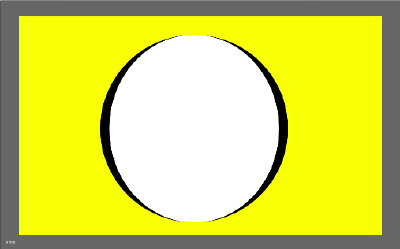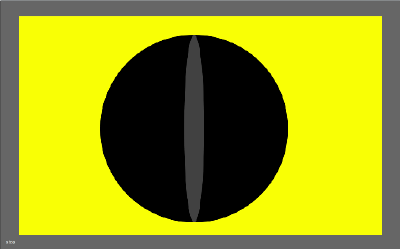No edit summary |
No edit summary |
||
| Line 26: | Line 26: | ||
if (data != null) { | if (data != null) { | ||
int intData = int(data); // ---> variable for incoming data | int intData = int(data); // ---> !! variable for incoming data | ||
background(255, 255, 0); | background(255, 255, 0); | ||
noStroke (); | noStroke (); | ||
ellipse (560, 360, 600, 600); / | ellipse (560, 360, 600, 600); | ||
/* ---> 1. circle: 'background circle' (just as a referrence for the 2. circle) */ | |||
noStroke (); | noStroke (); | ||
fill (intData, intData, intData); // ---> !! set fill | fill (intData, intData, intData); // ---> !! set fill colour with the value read | ||
ellipse (560, 360, intData, 600); / | ellipse (560, 360, intData, 600); | ||
/* ---> 2. circle: the 'pupil' (visualizes the incoming data) */ | |||
} | } | ||
} | } | ||
Revision as of 11:10, 11 May 2021
An experiment with the LED sensor of an Arduino, linked to Processing graphics:
inverted pulsating cat’s eye
When the light is high, the pupil of the cat’s eye widens,
when the light is low, the pupil of the cat’s eye closes.
[I know in reality, it’s the other ways round… ;) ]
--> The color of the pupil also changes, from bright (high value) to dark (low value)
the relevant part of the processing code:
if (data != null) {
int intData = int(data); // ---> !! variable for incoming data
background(255, 255, 0); noStroke (); ellipse (560, 360, 600, 600); /* ---> 1. circle: 'background circle' (just as a referrence for the 2. circle) */
noStroke (); fill (intData, intData, intData); // ---> !! set fill colour with the value read ellipse (560, 360, intData, 600); /* ---> 2. circle: the 'pupil' (visualizes the incoming data) */ }
}



